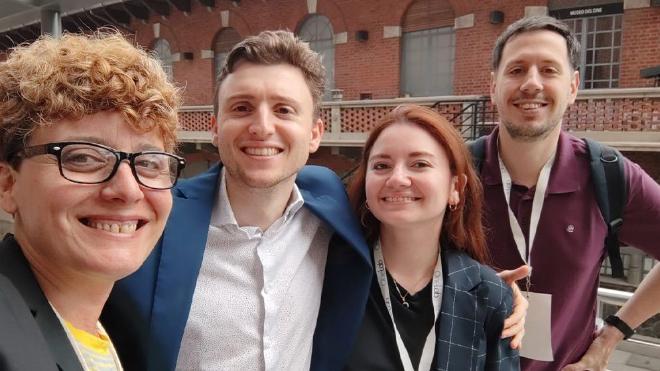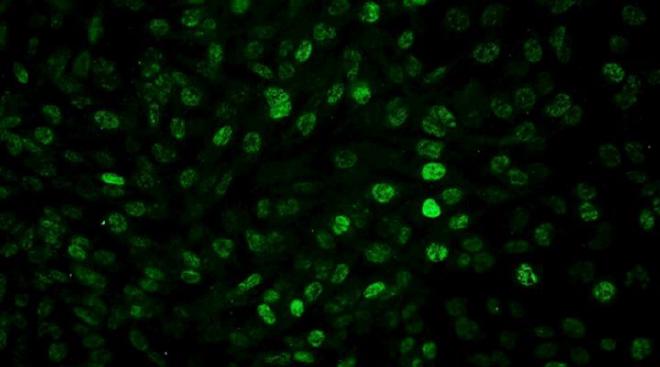

Considering that there has been no significant progress in the treatment of these tumors over the past 20 years, it is crucial to develop new therapeutic approaches to improve patient survival. Now, CONICET specialists have identified a new therapeutic strategy that, in in vitro and preclinical studies, successfully halted the development of glioblastoma by making it more sensitive to chemotherapy and radiotherapy. The breakthrough was published in the journal Life Sciences.

“We discovered that blocking a protein called Foxp3, which is expressed in glioblastoma cells, enhances the effectiveness of chemotherapy and radiotherapy. The results of the study are encouraging for those of us in the scientific community seeking to contribute to the development of real and effective therapeutic options for patients with this tumor. The therapeutic strategy was successfully tested in in vitro and preclinical studies, and our hope is that it can be tested in clinical trials in the future, but additional research is still needed to achieve this,” says Marianela Candolfi, leader of the study and a CONICET researcher at the Institute of Biomedical Research (INBIOMED, CONICET-UBA).
Therapeutic target #
The Antitumor Immunotherapy Laboratory, led by Candolfi, has been interested in Foxp3 as a therapeutic target for years because it is a very important protein for the functioning of regulatory T lymphocytes, which, instead of inducing the immune system response, suppress it.
Candolfi and colleagues used an experimental gene therapy based on a very small molecule, or peptide, called P60, developed by Juan José Lasarte at the University of Navarra in Spain*. It crosses the cell membrane and inhibits the Foxp3 protein. “When we blocked Foxp3 using P60 in laboratory experiments, the response of glioblastoma cells to radiation therapy and a variety of chemotherapy drugs improved significantly,” the CONICET researcher explains.
In in vivo studies, Candolfi’s team used mice brain-inoculated with neurospheres containing lesions characteristic of human tumors, developed by the laboratory of Argentine scientist and study collaborator María Castro at the University of Michigan in the United States*. To treat the tumors ‘in vivo’, the teams led by Candolfi and fellow CONICET scientist Flavia Zanetti of the César Milstein Institute of Science and Technology (CONICET- Pablo Cassará Foundation) developed an adenoviral vector that expresses the P60 molecule or peptide inside the tumor cells.

“This strategy allows for sustained expression of P60 in the tumor area, facilitating therapy and reducing the likelihood of systemic side effects. Intratumoral injection of the vector inhibited tumor growth and significantly improved the response to chemotherapy, leading to tumor eradication and long-term survival in one-third of the mice treated with the combination therapy,” says Candolfi. She adds that: “we did not observe neurotoxic effects with any of the treatments used; therefore, this strategy would have a good safety profile for treating these tumors.”
Also participating in the progress were Matías Garcia Fallit (first author) from INBIOMED and the Department of Physiology, Molecular and Cellular Biology of the Faculty of Exact and Natural Sciences at UBA; Jorge A. Peña Agudelo, Alejandro J. Nicola Candia, Nazareno Gonzalez, Melanie Pérez Küper, Yamila Zampini, Ana Clara Romero, Cristian Sobarzo and Ivana Sánchez Rojas from INBIOMED; Hebe Durán and Marina Perona from the National Atomic Energy Commission (CNEA); Luisina Belén Ripari and Guillermo A. Videla-Richardson from the Foundation for the Fight against Childhood Neurological Diseases (FLENI), Buenos Aires, Argentina; Flavia A. Zanetti from the César Milstein Institute; Teresa Lozano and Noelia Casares, Juan José Lasarte from the Center for Applied Medical Research (CIMA, CCUN), Spain, and the Navarra Health Research Institute (IDISNA), Spain.
Citation #
-
The paper Targeting FOXP3 in glioblastoma: Blockade of tumor intrinsic effects boosts response to chemo-radiotherapy was published on Science Direct. Authors: Matías Garcia Fallit, Jorge A. Peña Agudelo, Alejandro J. Nicola Candia, Nazareno Gonzalez, Melanie Pérez Küper, Yamila Zampini, Ana Clara Romero, Cristian Sobarzo, Ivana Sánchez Rojas, Hebe Durán, Marina Perona, Luisina Belén Ripari, Guillermo A. Videla-Richardson, Flavia A. Zanetti, Teresa Lozano, Noelia Casares, Juan José Lasarte & Marianela Candolfi.
-
The article Especialistas del CONICET logran frenar un tipo de cáncer cerebral en estudios preclínicos con una novedosa estrategia terapéutica, signed by Bruno Geller was published on CONICET’s website.
Contact [Notaspampeanas](mailto: notaspampeanas@gmail.com)

